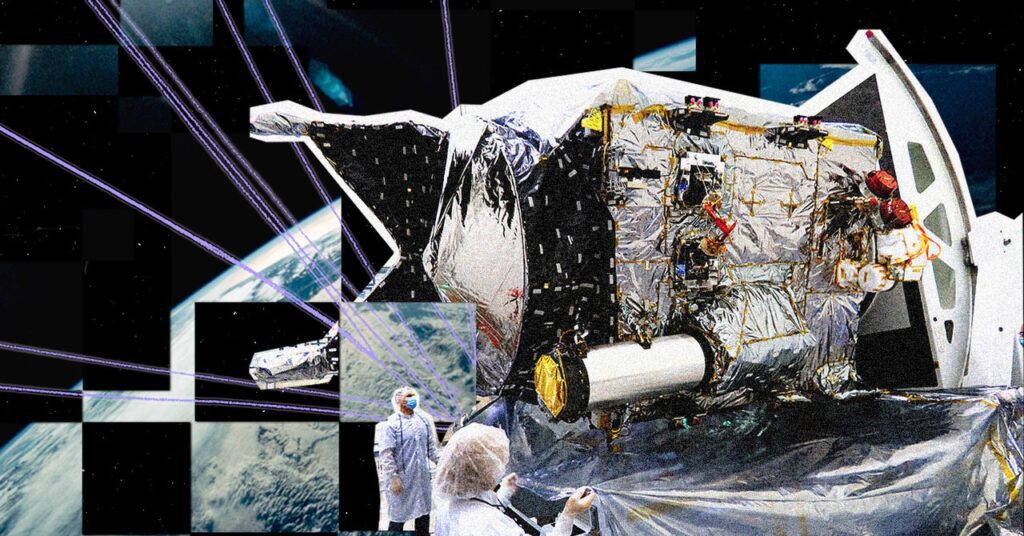[ad_1]
NASA’s Psyche spacecraft blasted off this morning at 10:20 am Eastern time and is now en route to its namesake metal-rich asteroid. The long-delayed mission will examine the asteroid with a suite of scientific instruments and determine whether the hunk of rock was the core of a baby planet that never fully formed.
But that’s not Psyche’s only mission. The probe also carries an important experiment. It will test a futuristic laser technology for transmitting large amounts of data to and from faraway spacecraft that’s called the Deep Space Optical Communications project, or DSOC. It’s expected to deliver much-improved data rates, with 10 to 100 times the capacity of radio communications. Radio is currently the only option for sending and receiving signals in space, but it won’t be able to meet the growing data needs of long-range craft. DSOC could be a game-changer for the next generation of missions, allowing future probes to transmit high-resolution images or astronauts on Mars to send videos back home.
“We’re trying to show the capability of very high data rates from Mars-type distances. That will allow higher-resolution scientific instruments, like Mars mapping. And there’s a lot of interest in human exploration of Mars, which will require a high bandwidth,” says Abi Biswas, the DSOC project technologist at NASA’s Jet Propulsion Laboratory in Pasadena, California.
The DSOC near-infrared laser transceiver is housed in a tubelike sunshade sticking out of one side of the Psyche spacecraft. It’s designed to send high-rate data with a 4-watt laser and to receive low-rate data from Earth with a photon-counting camera, both going through an 8.6-inch aperture telescope.
Engineers will begin testing this system about 20 days after launch, but it will just be a technology demonstration. Psyche’s mission data will be relayed through traditional radio communications. DSOC will send and receive laser signals about once per week as engineers test the transmitters and detectors for the first two years or so of the spacecraft’s nearly six-year trip to the asteroid.
Similar technologies have been used before by European Space Agency satellites in geostationary orbit and a NASA moon orbiter. But at a distance of 200 or 300 million miles, this will be the first time anything like this has been attempted farther—much, much farther—than the moon.
[ad_2]
Matéria ORIGINAL wired
